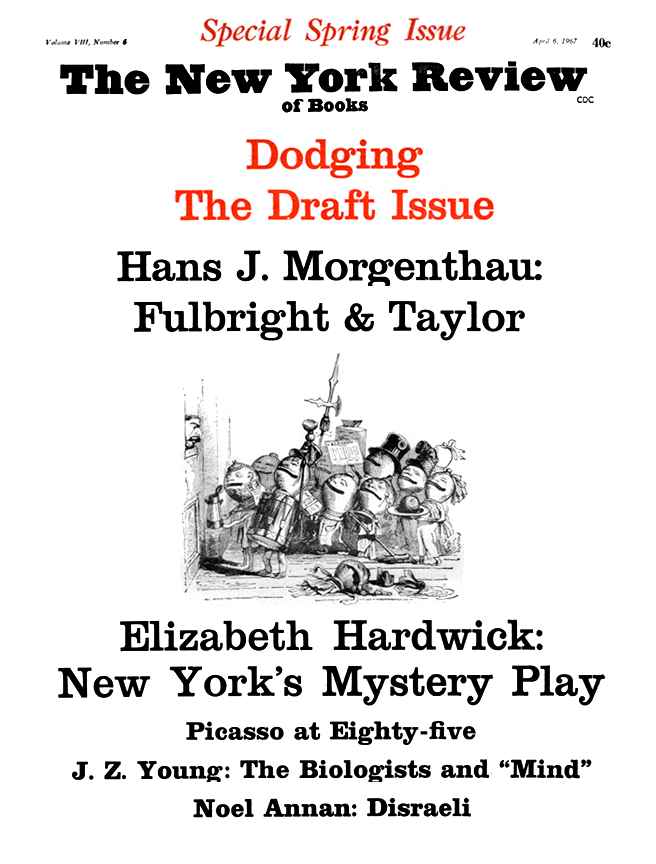In response to:
The Sunset Strip from the March 9, 1967 issue
To the Editors:
The satisfied pair in the Forest Lawn advertisement weren’t the only shades Professor Friedenberg and Mr. Bernhard encountered on the Sunset Strip [NYR, March 9]. The New York Times, no source of Significant Truth as its editors are over thirty, but often reliable for vital statistics, reported the death of tennis player William Tilden in June, 1953. Who opened Pandora’s Box?
William P. Amlie
Boston, Massachusetts
Edgar Z Friedenberg replies:
In an earlier review in this journal, I referred erroneously to a distinguished psychologist as “late”; so I suppose my well-meant resurrection of Big Bill Tilden evens things out demographically, at least. What really bugs me about this error is that I would not have made it if I had known nothing whatever about him. But as Mr. Justice Warren might have said about the late—I think I am on firm ground here—Lee Harvey Oswald—it all fit so perfectly. Like his namesake, the actual owner of Pandora’s Box, Tilden was an integral part of the Hollywood scene. Moreover anyone, however ignorant of his death, who knew anything about his life could have imagined no occupation more likely to afford him a contented old age than running a coffee-house for “teen-agers.” Still, a fact is a fact; William Tilden who ran Pandora’s Box was never a famous tennis player; Big Bill Tilden died before the peanut-butter conspiracy began; though I still hope our reference to him may have made him one of the grateful dead.
While we are correcting errors, I think I have found two others in the piece, though the ethnographic problems involved in making sure seem greater than the issues at stake. The surname of the singer and composer of “For What It’s Worth” is given on the disc from which Bernhard and I worked as “Stillis”; and this is the way it appears in The New York Review. But another pressing I have since bought in another city—I don’t know which was in fact made earlier—spells his name as “Stills”; and so does the cover of the new Buffalo Springfield album. Whichever it is, I hope to hear more of him.
The second record is more clearly cut than the first, and the throw-away word in the second stanza that we transcribe as “families” on this record sounds like the phrase “it’s time we…” or, phonetically, “s’tahm we….” I have never seen an authoritative printed version—sheet music is not a folk-rock custom—though, since the song is copyrighted, there must be one.
This Issue
April 6, 1967


